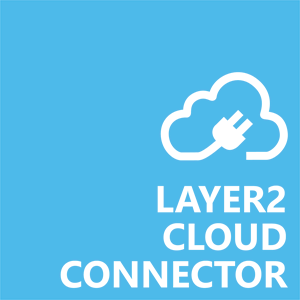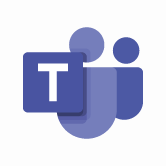Connect your Microsoft Teams step-by-step
Contents
1. Configuring Microsoft Teams
2. Configuring the Layer2 Cloud Connector
2.2 Configuring the Data Entity 1
2.3 Configuring the Data Entity 2
1. Configuring Microsoft Teams
Behind every Microsoft Teams channel is a SharePoint Online page. In order to sync files to our Microsoft Teams channel we will need to retrieve the underlying SharePoint Online library URL.
The screenshot below shows where to find the URL, copy it as we will need it later for the connection string.
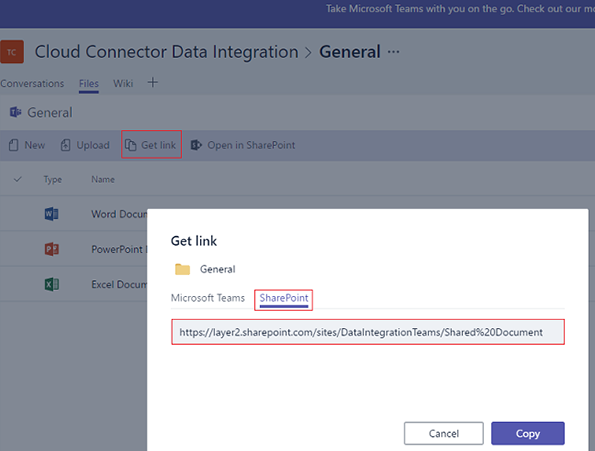
2. Configuring the Layer2 Cloud Connector
2.1. Creating a new connection
Create a new connection by using the Create New Connection option in the Actions pane (right-hand side). The new connection will appear at the bottom of the Connection Manager List (left-hand side). Click on your newly created connection to open the connection configuration settings.
Choose a meaningful name for your connection and replace the current "New Connection" Connection Title with it.
Connections to File Server can be bi-directional. An initial connection should always be uni-directional to assure that both data entities are identical before switching to bi-directional. Therefore, choose Left to Right as Direction. You can change this setting after your initial synchronization finished successfully.
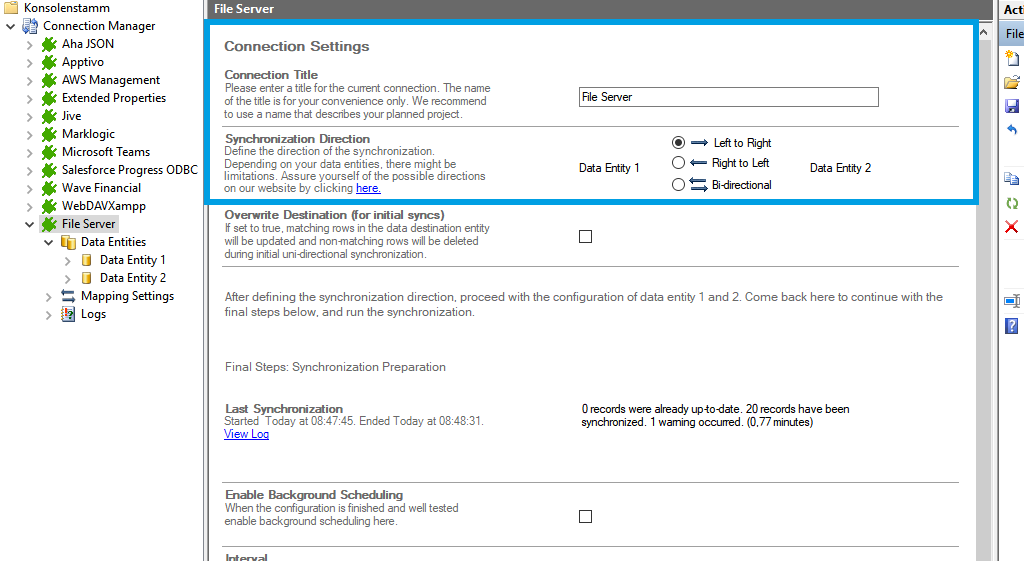
2.2. Configuring the Data Entity 1
We will now set up our Data Entities. Go to the data entity “Data Entity 1” to open the configuration settings.
Choose a Data Entity Title. It is recommended to give your entities meaningful names to maintain an overview when you decide to set up multiple connections.
Select the Data Provider for File System from the data provider list. You can search for File System by typing into the selection box.
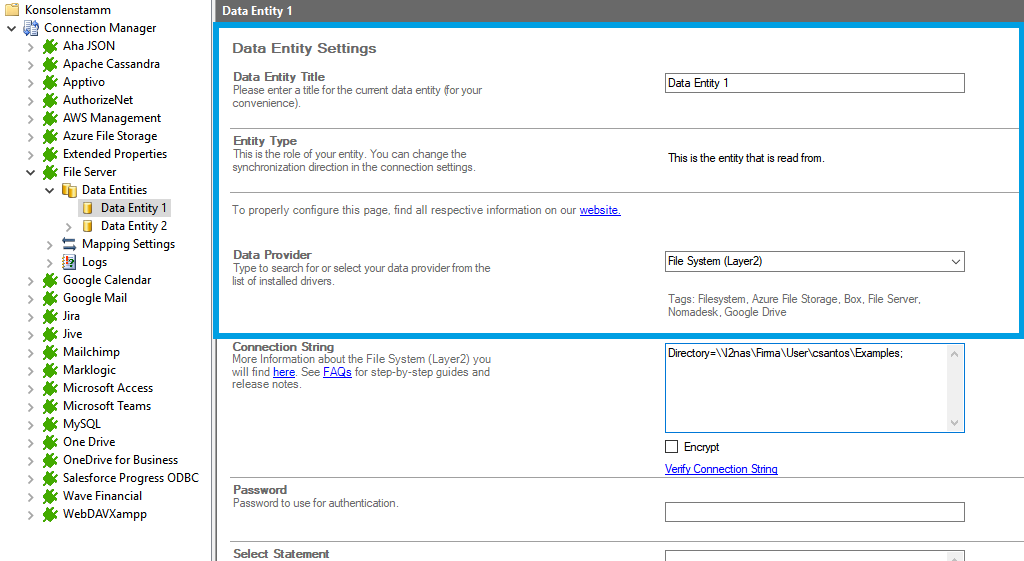
For the Connection String, we need the in step 1 mentioned information. You can copy the below connection string and adjust it to match your gathered information. Use the Verify Connection String option to evaluate if the provided connection string is valid.
Directory=\\l2nas\Firma\User\csantos\Examples;
- "Directory=path;" this property defines the folder where the files are in you want to synchronize.
The Select Statement text box is used to define specific data queries, e.g you can filter for specific filetypes. We do not need it in this case. Save your changes by using the right-hand pane option Save Changes .
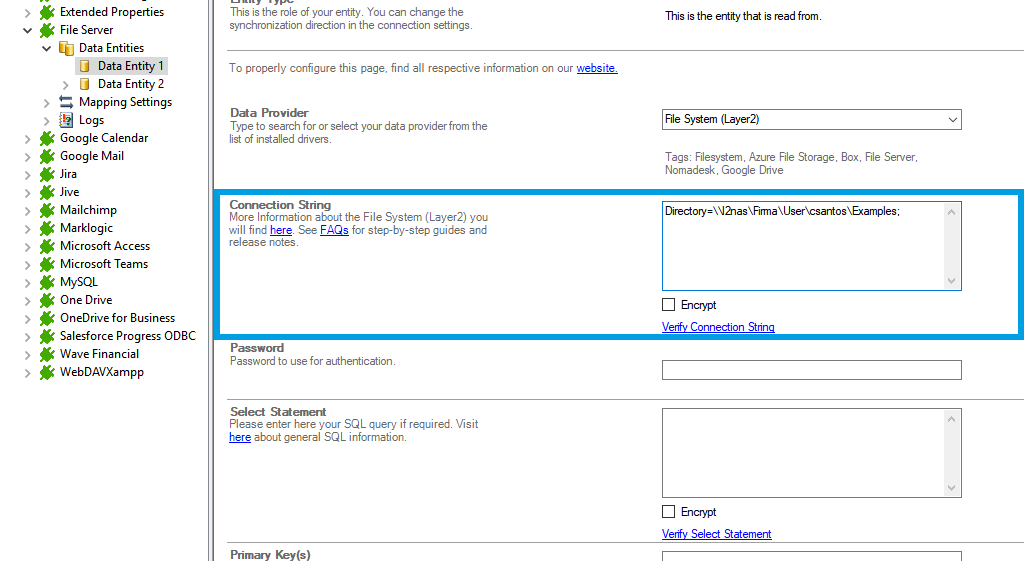
To check if all necessary columns are received, you can use the Preview Data option on the right-hand pane which will provide you with a pop-up window showing your sample data from your File Server entity.
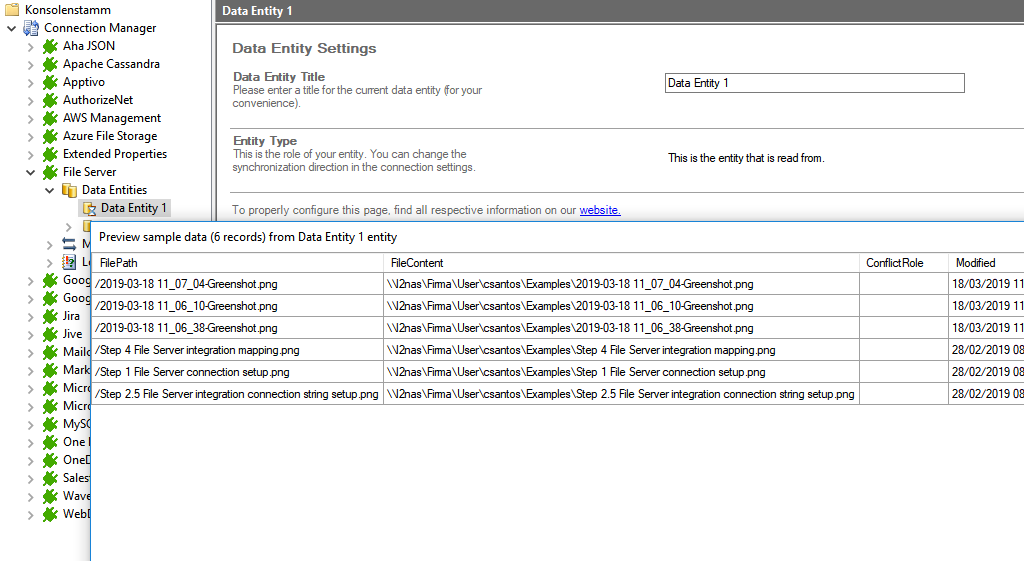
2.3. Configuring the Data Entity 2
We are going to send the data to your Microsoft Teams channel. It's required that you set up this library prior to the next steps. Your channel should contain matching columns according to your source entity.
Use the left-hand pane to switch to the data entity "Data Entity 2". We will be using the Layer2 SharePoint Provider for this setup.
For more information about the SharePoint provider visit:
https://www.layer2solutions.com/support/cloud-connector-faqs/layer2-csom-sharepoint-ado-net-provider .
You can copy the below Connection String which contains the minimum of required properties to connect to your custom SharePoint Online Document Library.
URL=https://your_custom_sharepoint_library_url/Forms/AllItems.aspx;Authentication=Office365;User=User@domain.com;
- "URL=https://your_custom_sharepoint_url/Forms/AllItems.aspx;" this property defines the URL of your custom document library that will be addressed.
- "Authentication=Office365;" this property will determine the authentication method used. Office365 is the default authentication method to access Microsoft Office 365 / SharePoint Online. This method will not work in case of federation, e.g. ADFS. For further authentication method you can consult the provider specifications linked above.
- "User=User@domain.com;" this property should describe the user you wish to connect to SharePoint to.
Enter the password that belongs to the user account used in the connection string into the Password field. Save your changes by using the right-hand pane option Save Changes .
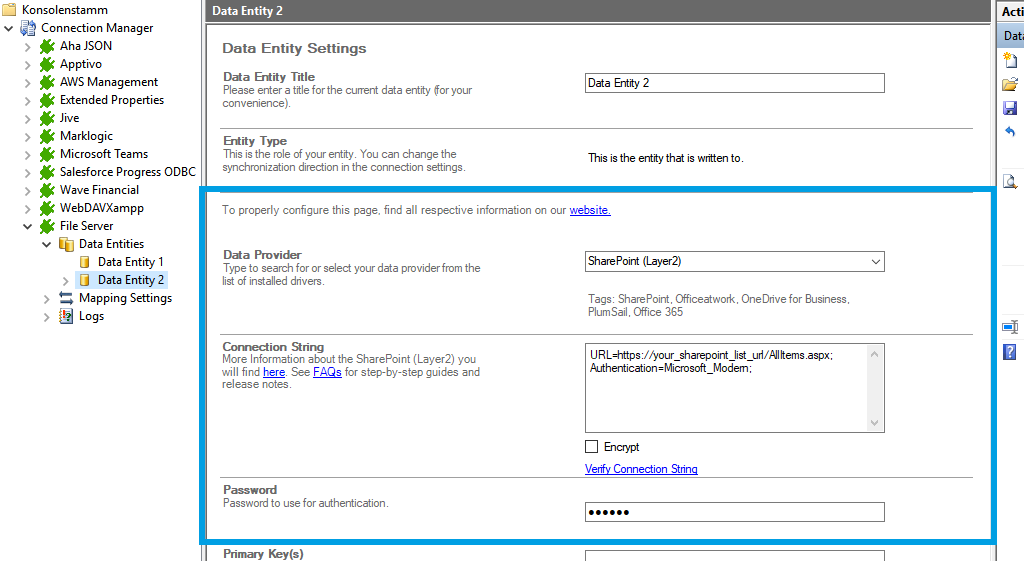
In the next step, we will configure our mapping settings. Click on the Mappings option on the left-hand pane. If your fields from SharePoint are named identical to the fields from your source system, the Enable Auto Mapping option will match those columns. Disabling this option allows you to match your columns as needed. We enabled auto-mapping in our setup. Save your changes by using the right-hand pane option Save Changes.
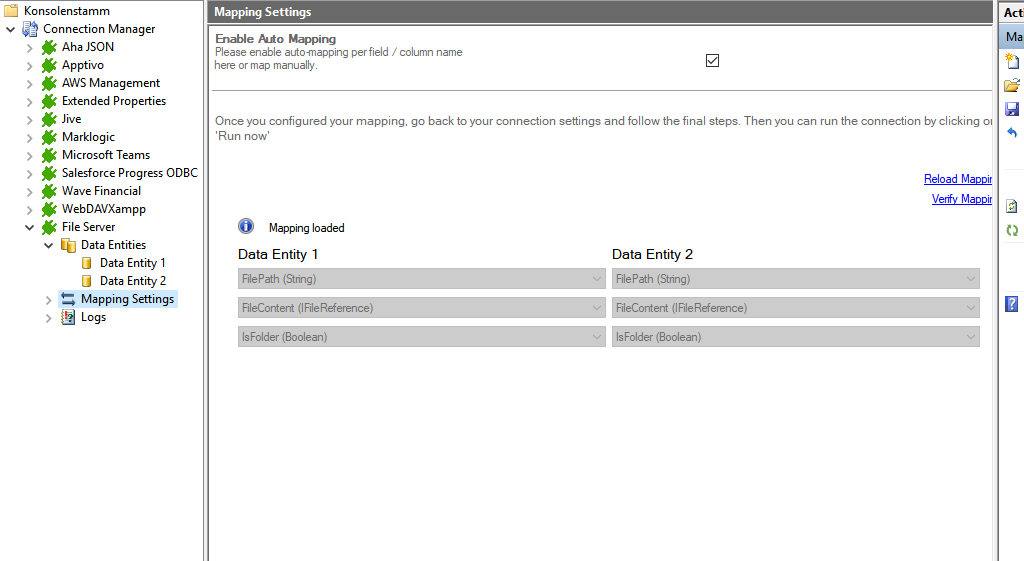
2.4. Running your connection
To run your connection switch back to the main connection configuration node and use the Run Now Button located on the bottom of the setup page. The Run Synchronization Toolbox will also display the synchronization process.
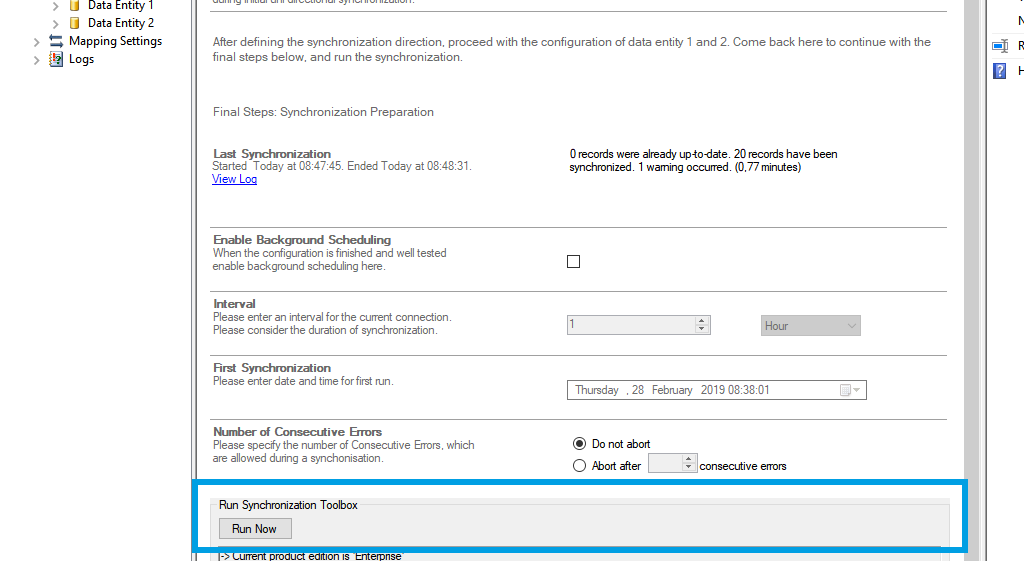
Below is a data preview of the information we have accessed in our source entity:
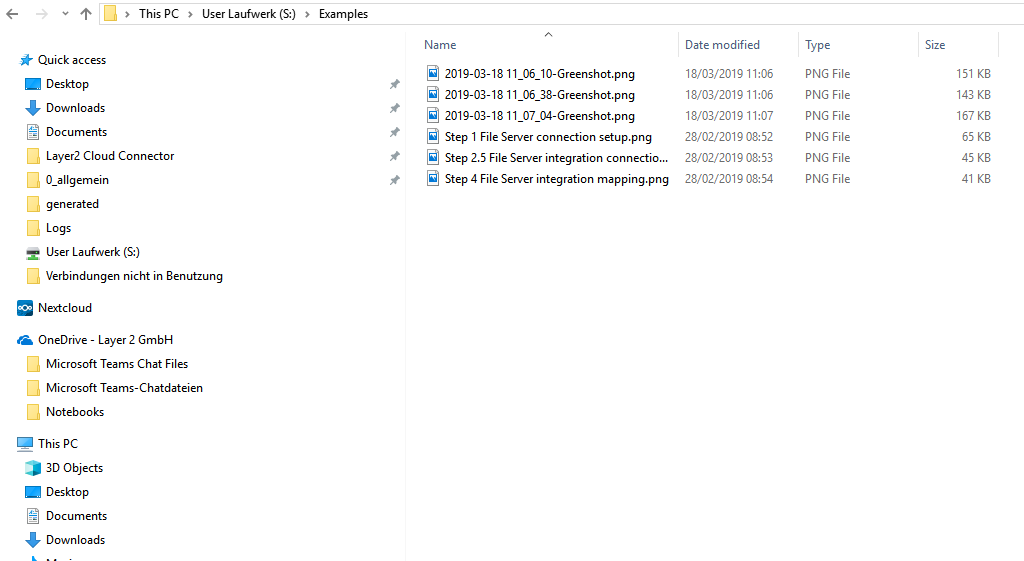
This will be the result in our Microsoft Teams channel after our initial successful synchronization:


